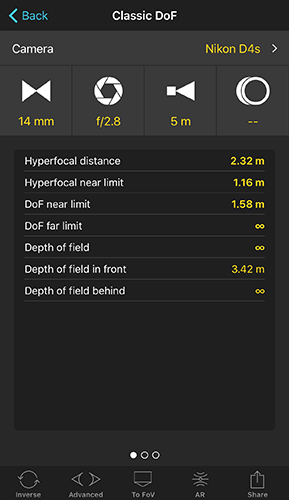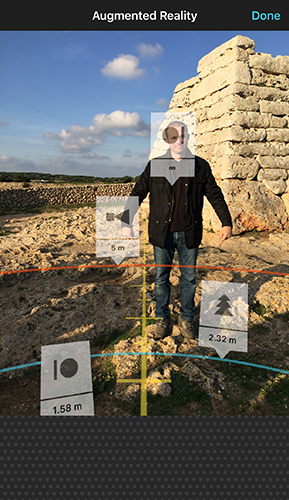How to use the DoF Calculator
This calculator will help you assess what camera settings are required to achieve a desired level of sharpness.
Depth of field is one of the most powerful creative tools in photography and, to help you master it, we've prepared a DoF guide with lots of love. Read it and you'll become a truly story teller, I promise:
Depth of Field: The Definitive Guide
Sometimes, you’ll want to maximize depth of field in order to keep everything sharp. A classic example is when you’re photographing the Milky Way, where you typically want to capture detail from the foreground to the horizon while capturing stars as big bright spots. Commonly, you’ll use deep depth of field when photographing landscapes (daytime and at night), cityscapes and architecture.

Other times, you’ll prefer to use a shallow depth of field to direct viewers’ attention to a specific place, for example, to separate a subject from a busy background. It’s the typical case of portrait photography, but it also comes very handy in landscape, street, product, event and close-up photography.
Have a look at the following picture, we use shallow depth of field to lure the viewer's attention to the model. We used this photo when our t-shirt shop went live.

In the calculator, just introduce your camera type (sensor size), aperture, focus distance, focal length (the real one! not the equivalent in 35mm) and teleconverter to calculate the depth of field:
- Hyperfocal distance: The closest distance at which a lens can be focused while keeping objects at infinity acceptably sharp. When the lens is focused at this distance, all objects at distances from half of the hyperfocal distance out to infinity will be acceptably sharp.
- Hyperfocal near limit: The distance between the camera and the first element that is considered to be acceptably sharp when focusing at the hyperfocal distance.
- Depth of field (DOF): The distance between the farthest and nearest points which are in acceptable focus. This can also be identified as the zone of acceptable sharpness in front of and behind the subject to which the lens is focused on.
- DOF near limit: The distance between the camera and the first element that is considered to be acceptably sharp.
- DOF far limit: The distance between the camera and the furthest element that is considered to be acceptably sharp.
- Depth of Field (DOF) In Front: Distance between the DoF Near Limit and the focus plane.
- Depth of Field (DOF) Behind: Distance between the focus plane and the DoF Far Limit.
Depth of Field Calculator in PhotoPills app
This calculator is also available in PhotoPills app, extended with an augmented reality view to help you visualize where to focus. Besides, you’ll also find an advanced DOF calculator to let you set the Circle of Confusion (CoC). Both classic and advanced calculators include an inverse mode (DoF to settings).


Note: given the sensor size, the circle of confusion is calculated assuming a print size of 8''×10'' (20cm×25cm), a viewing distance of 10" (25cm) and the manufacturers standard visual acuity.
Finally, If you're interested in improving your photography, check our detailed photography guides on:
- Milky Way Photography
- Moon Photography
- Astronomical Events Photography
- Star Trails Photography
- Meteor Showers Photography
- Lens Filters and Long Exposure Photography
- Drone Photography
- Solar Eclipses Photography
- Lunar Eclipses Photography
- Full Moon Silhouettes Videos
- How to find sunrises and sunsets.
- How to find moonrises and moonsets.
And also check these fundamental photography guides:
How to embed the DoF Calculator on your website
Take the power of PhotoPills’ Depth of Field (DOF) calculator with you. Just copy the following lines and paste them within the code of your website, right in the place where you want to embed it:
<div id="ppdof"></div>
<script src="//photopills.com/widgets/ppdof.min.js" async></script>
The code will run asynchronously, without penalizing the loading time of your website.